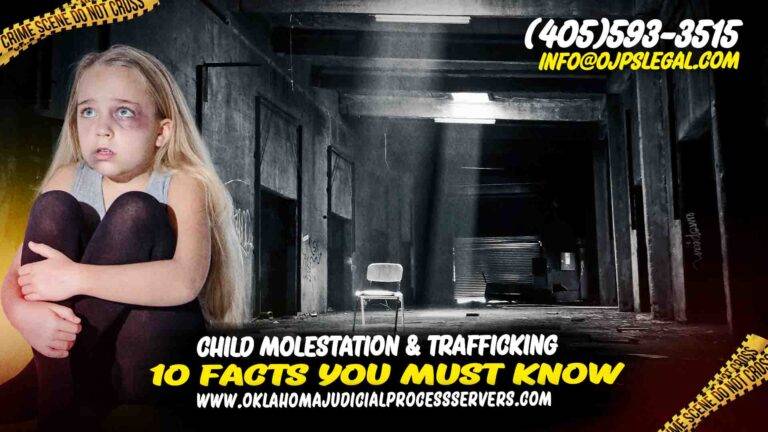Let’s not pretend this is just another “awareness” post. This is a scream into the void about what’s happening to kids right now while we scroll past. Don’t pretend that this is not happening. Child molestation and trafficking are real, and they’re happening in our society. I can’t stop thinking about it. I’m Makayla, and I’ve seen what this does to families—the kind of shit that haunts you at 3 AM and nothing matters anymore. If you don’t want your immediate society to be filled with child molestation and trafficking, then you need to speak up and contact experts in the field. If you’re in Oklahoma and need a rape detective who actually gives a damn, call (405) 593-3515. Because we don’t want this occurrence to happen to your family. We don’t do “thoughts and prayers.” We hunt.
1. Your Neighborhood Isn’t Safe. Nowhere Is.
Forget the “stranger danger” bullshit. These child molestation monsters are everywhere—coaching Little League, teaching Sunday school, crashing PTA meetings. It’s not only the strangers that are evil these days. Your close relatives might be the evil haunting your kids everywhere they go. I’ve seen a pediatrician with trophies in his basement and a pastor with a waiting list of victims. Wake up.
2. Grooming Isn’t “Creepy.” It’s Calculated.
A trafficking detective buddy once told me: “They don’t rush. They’ll spend years playing ‘cool uncle’ until the kid defends them to CPS.” Gifts? “Special” attention? Isolation? It’s a tactic not to rush and molest or kidnap your kids. They simply move close to them, become friends with them by buying them gifts. They also make them seem special. That’s not love. That’s a predator’s playbook.
3. Your Kid’s Phone Is a Hunting Ground for Child Molestation and Trafficking
We pulled a 12-year-old off a Discord server last month. The guy posing as her “boyfriend”? A 43-year-old with 17 other kids on his hook. Imagine a 12-year-old girl being targeted into feeling safe in a relationship with an evil man. Just through the Internet of Things, you give your children access to. That’s why you need to be more careful. Screens aren’t babysitters. Check them.
4. They Silence Kids Like Mafia Hits
One survivor of child molestation and trafficking told me: “He said he’d burn my little brother alive if I talked.” That’s not fear—that’s terrorism. It’s sad to hear that. Can a sane person think about burning his little brother alive, not to mention saying it out loud? Evil is everywhere, my friend. And yeah, some cops still shrug it off as “family drama.”
5. 93% of Perps Are People You’d Trust With Your Dog
Your cousin. Your divorce lawyer. And your kid’s soccer coach. The FBI’s own stats prove it. Think of any other person you trust with your dog, and you can also trust them to stay with your child. They can be the monster that you should be scared of, and your family should stay far away from them. Yet we still act shocked when the guy who brings donuts to the block party gets raided at dawn.
6. The Signs Are There—You Just Missed Them
That “phase” where your daughter stopped showering? The bruises she blamed on gym class? You should not be too busy to give attention to some signs. You need to search for detailed facts about what happened because it can be one of the early signs of protection. A trafficking victim we found had been “dating” her abuser in plain sight for two years. Teachers thought it was “puppy love.”
7. Runaways Don’t “Choose” That Life
A cop in Tulsa told me, “We found a 14-year-old in a motel with track marks. Her ‘boyfriend’ was selling her for $30 a pop. Who does that? Can your husband do that to you before your marriage? I guess not. That’s why you need to be more vigilant when it comes to your daughter dating some weird guys that does stuff like that. Just to think of it, what’s a 14-year-old doing in a motel? A small girl who is meant to be in school with her colleagues. Even if it is during a holiday, there are safe places to be other than a motel. She is now in a relationship with a stranger, which is very bad. She thought he loved her.” These kids aren’t rebels. They’re prey.
8. Your “Awkward” Sex Talk Failed
Newsflash: “Good touches/bad touches” doesn’t cut it. One survivor laughed bitterly: “My mom said ‘don’t take candy from strangers.’ You might think it’s a friendly gesture for someone to appreciate your daughter’s beauty by touching her hands. Advise your daughter just like your mom said, not to take candy from any stranger. My uncle gave me Xbox games.”
9. Your Silence Helps Them
That “massage parlor” with a parade of teens? The neighbor whose “niece” never goes to school? Once you keep silent and don’t speak out about any evil signs, then things get worse. The evil people feel confident to carry out their plans when they feel unnoticed. But you exercise whistle-blowing to alert others. They pick their race into the jungle because they are also scared. Report it or shut the hell up when another kid vanishes.
10. Survivors Never Really Escape
The worst part? Even when we nail the bastards, the damage is forever. The best thing is not to experience the agony of child molestation and trafficking. As the general saying goes here too, prevention is better than a cure. Don’t let your children fall victim. Identify the early signs and avoid them. A therapist who works with victims once sobbed in my office: “They all ask the same thing—‘Why did God let this happen?’ I still don’t have an answer.”
Conclusion: Stop Being Polite
This isn’t a PSA. It’s a war. Stop being polite to evil people; speak, act, and report them immediately. Visit Oklahoma Judicial Process Servers or email info@ojpslegal.com if you’re ready to fight. Or keep pretending it’s “someone else’s problem.” Until it’s your kid.


